Geelong Greyhound Racing Club
LCA: City of Greater Geelong
Chairman: Brian Parkinson
Manager: Ray Bartolo
Tel: (03) 5275 2298
Fax: (03) 5275 5211
Email: geelong@grv.org.au
Website: geelong.grv.org.au
Address: Beckley Park,Broderick Road, Corio, 3214
Postal: PO Box 125, Corio, 3214
General Manager - Ray Bartolo
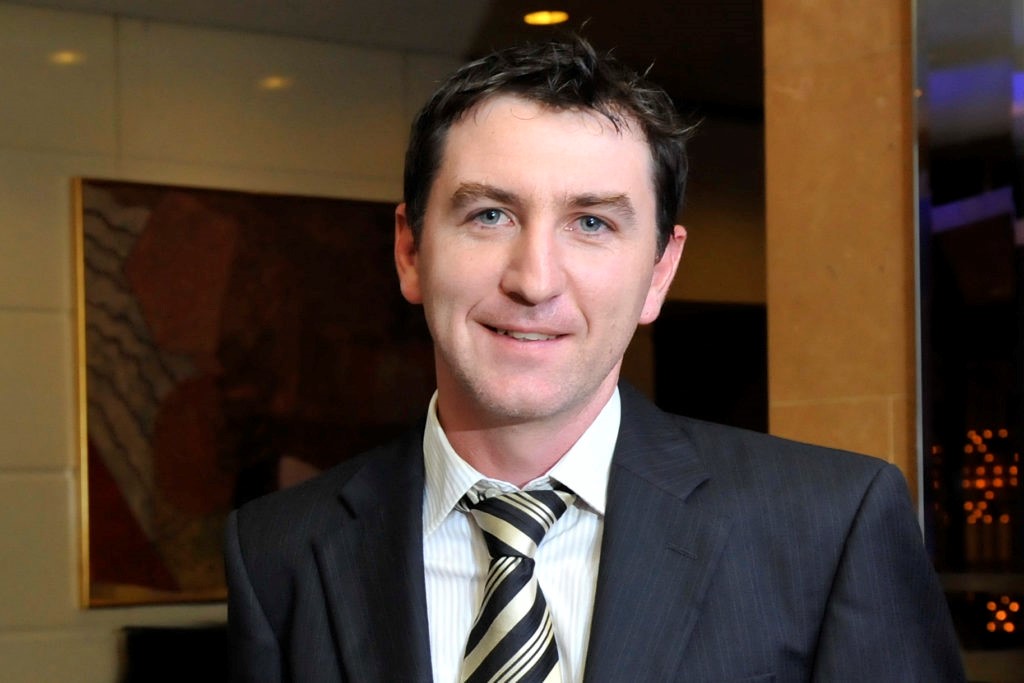
In the late 80s Rays parents bought four pups from Stephen Kavanagh in NSW, and shall we say the rest is history.
After completing High School, he studied Biological Science at University and went on to complete a PhD in Molecular Biology and Renal Physiology in 2007. During 2007 Ray moved to the Dunedin in New Zealand to continue his research career, working on genes associated with the disease Cystic Fibrosis (FC) using the brush-tailed possum as a model organism. Brush-tailed possums are a pest species in New Zealand and the lab where he worked was focussed on finding a drug to aid the treatment of CF. After moving back to Australia at the end of 2010, he started to train greyhounds while being a stay-at-home father to his son. However, when baby number two arrived he decided it was a good time to go back to work and started a research position at the Walter and Eliza Institute.
The research was focused on a family of proteins that can either prevent, or promote, cells from dying and have role in a range of cancers. In 2014, Ray moved into paediatric leukemia research at the Murdoch Children’s Research Institute were the Lab focussed on improving techniques to diagnose high risk paediatric cancers and precision medicine.
Then a slight change of careers with two years at AWM Electrical and Data Wholesalers in Port Melbourne learning the challenges of running a commercial business.
Ray has a strong passion for the greyhound industry and has been a member of Geelong and Melbourne Greyhound Racing Club Boards, and the GRV board prior to taking up the General Manager position at Geelong towards the end of 2020.
Ray has three children that all enjoy the greyhound industry, especially when they get the chance to be in a winning photo.
Welcome to the team Ray
History of the Geelong Greyhound Racing Club
Greyhound racing in Geelong has been conducted at three separate venues during its' long and varied history. It began in the early part of the last century when it was a centre for open coursing, frequently hosting the premier Waterloo Cup.

The late Steve McKee was six when one of his parents' greyhounds won a minor prize at the Waterloo Cup. Steve achieved fame for marching down to one of the 15 bookies and demanding the prize money. Later the young Steve McKee trained coursing greyhounds in the paddocks across from the Mooroolbark Creek where there were plenty of hares. Three or four beaters would move ahead to flush the hares out and then the greyhounds would be slipped.
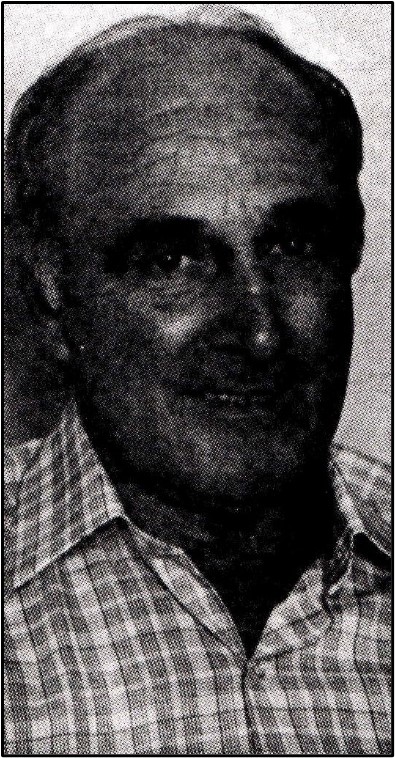 Often, he would go out with a family in the morning and course the greyhounds twice over a two-minute run. More frequently than not, the hares would get away by escaping through a fence. Later, when he was training greyhounds for the track, he would take them over a five-mile walk/jog each morning and then walk them at night. Soon he had a drag lure running up the hill at his Lovely Banks property and would train the greyhounds there.
Often, he would go out with a family in the morning and course the greyhounds twice over a two-minute run. More frequently than not, the hares would get away by escaping through a fence. Later, when he was training greyhounds for the track, he would take them over a five-mile walk/jog each morning and then walk them at night. Soon he had a drag lure running up the hill at his Lovely Banks property and would train the greyhounds there.
Racing was first held in Geelong in 1936 under proprietary ownership at Nelson Park, near the Ocean Child Hotel, opposite the Melbourne Road in North Geelong. Nelson Park was run and owned by the two Nelson Brothers and races were held on Saturday afternoon. One of the Nelson brothers was Director, Handicapper, Steward (along with his brother), Betting Supervisor and Starter, which gave the proprietary interests a significant influence over events at the Park. In fact, the Nelsons did everything as the other brother graded, handicapped and judged. Steve McKee still believes that the only money the Nelsons got was the entry fee from the gates.
The greyhounds would run between two poles for a finish line where the placings would be called. There were no photo finishes in those days, just judging by the Nelson brothers. The prize money in those days was 4 pounds ($226) for a win, 1 pound ($56) for second and 15 shillings ($42) for third. Of the opening night, the Geelong Advertiser reported; "A grand opening of the Nelson Park Olympia, the 'Sportsman Paradise' on the Melbourne Road in North Geelong took place on the 9th of November 1937.”
A bus ran from the city to the ground on the opening night, which was to feature mass bands and a grand parade, greyhound racing, an exhibition of night trotting, professional running and other novelty events.
The night marked the culmination of a 15-month effort to provide a sporting venue capable of accommodating 15,000 people, with the grandstand, ten entrance gates, six change windows and a safety fence to prevent the public being endangered from the traffic on Melbourne Road.
There was parking for 800 cars and the staff wore a snappy uniform of scarlet jackets and khaki pants. The greyhound track was said to be the only one in the Commonwealth where the public had two views of the greyhounds during a race.
The Geelong Advertiser also reported that "the amazing swiftness of the greyhounds and thrills associated with the midget car and motorcycle dirt track racing were presented to a huge crowd under ideal weather conditions, when the grand carnival opening of the Nelson Park Olympia at North Geelong was held last night."The meeting was successful beyond wildest expectations and it was announced that the official attendance figures were 21,000.
The response of the public to this new form of outdoor lighting was most gratifying for the promoters of Nelson Park Pty Ltd., who had spent a large sum of money and a great deal of time on the venture, designed to provide citizens with an entirely new type of recreation.
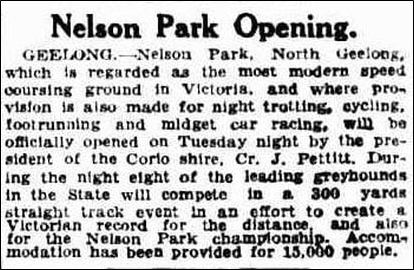
Greyhound racing was the principal attraction on the program; the speed of the animals drew audible exclamations of astonishment from the onlookers as they streaked around the course. Nelson Park also doubled as a motorbike racing track on cinders so loam would be spread across the track for the greyhound races. Motor-cycle races followed and although the riders acknowledged they would be more confident when the track was known to them and several minor improvements effected, they gave a splendid demonstration of speed and agility. In the midget car races, the drivers showed skill at manoeuvring the vehicles around the track. It was estimated that they reached speeds of 35 mph. Unfortunately, owing to the legal difficulties associated with trotting in the State, it was not possible to stage the exhibitions as planned. Further, owing to the breakdown of a motor vehicle to convey greyhounds from Melbourne to Geelong, there were a number of scratching’s. The shortage of greyhounds was made up by fox terrier racing.
As it was in the days before photo finishes and the race finish would be called as the greyhounds ran between two poles, often the punters were unhappy with the call, particularly if it was being done by the same person who had graded the races and arranged the box draw. It was not uncommon for an angry crowd to gather around the judging box endeavouring to shake the judge off his perch. Mary Payne, who was the grader at Napier Park, later took over that role at Nelson Park. Steve McKee regarded her as a perfect lady and doubts that, as grader, she had any part in the race rigging that bedevilled the club. As the Club was often short of greyhounds, Steve would often help Mary out and keep them going with greyhounds from his kennels. This meant he often had to race greyhounds that were not quite ready for racing at that time and probably had little chance of winning, thus shortening the odds for the well-informed.
One of the legends of the Geelong Club was Hugh Emmerson, who was a Life Member, Committee Member and Director of the Greyhound Racing Club and who is honoured with an annual memorial race. Emmerson supplied the pacemakers for the Nelson Park track in the 1940s, providing 10 pacemakers for the eight-race programs until the mechanical hare was introduced in 1955.
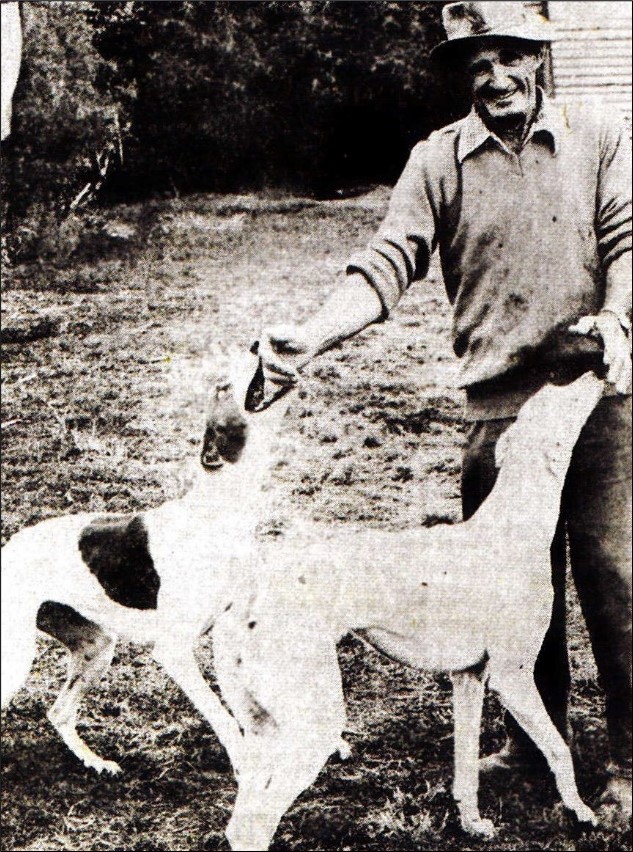 Emmerson reared greyhounds for the big names of the sport including Harold Matthews, Buck Buchanan, Chummy Parkes and George Schofield. His daughter, Ada Spitty remembers much of the detail of life in the industry in the 1940s and 1950s. She grew up on a farm before and during the WW 2, when they grew chaff for the horse teams especially the Light Horse, which was stationed in Melbourne. Her father's farm equipment was used for the heavy work at the many working bees on the track. Hugh had around 30 greyhounds in work but this would go to 150 at Christmas when he looked after greyhounds for people on holiday. Ada remembers the work needed to feed so many mouths and that it often fell to the kids if Hugh was away racing the greyhounds.
Emmerson reared greyhounds for the big names of the sport including Harold Matthews, Buck Buchanan, Chummy Parkes and George Schofield. His daughter, Ada Spitty remembers much of the detail of life in the industry in the 1940s and 1950s. She grew up on a farm before and during the WW 2, when they grew chaff for the horse teams especially the Light Horse, which was stationed in Melbourne. Her father's farm equipment was used for the heavy work at the many working bees on the track. Hugh had around 30 greyhounds in work but this would go to 150 at Christmas when he looked after greyhounds for people on holiday. Ada remembers the work needed to feed so many mouths and that it often fell to the kids if Hugh was away racing the greyhounds.
The greyhounds were fed horsemeat from "downers (sick or injured horses), and it needed an animal (usually a horse) every 10 days to feed the greyhounds. The pups were fed crushed grain and wheat meal that was boiled up in a copper The pups were also left a carcass (skinned horse) hanging on a tripod and they would jump up and tear bits off as it was lowered so they could reach it. The racing greyhounds were fed more carefully and would have their food weighed and they were also served vegetables. There was also fresh milk from their farm and ute-loads of old bread from the bakery.
During the war years, Ada was walking four greyhounds behind her bike each morning when she was eight. During the war, petrol rationing meant travel for races was limited so much of the racing was done locally. But she remembers the single lane road to Melbourne and leaving in the early afternoon to get to the city for night racing in the family's Chevrolet 4 truck with the greyhounds and kids in the back. At Nelson Park, her job was to hold the greyhounds between races and even at this tender age she suspected that greyhounds were being doped in the kennels. She remembers the early days at Corio where a number of the kennels that backed on to parklands had loose boards making it possible to tamper with the greyhounds before a race.
There was no electricity for lights at Nelson Park in the 1950s so racing was held on Saturday afternoon. And there was also no electricity at Lovely Banks where Ada lived until 1957 and she recalls her father leaving money with the bookies rather than walk home In the dark to Lovely Banks for fear of being robbed by one of the gangs who went to the races to see who was winning. Her dad died just before the last meeting at Corio Oval held in September 1979. He had been a part of Sub-Committee, which established a new track at Corio Oval, the former home of the Geelong Football Club in the city's Eastern Park and his death meant he was not able to see the opening of the new club.
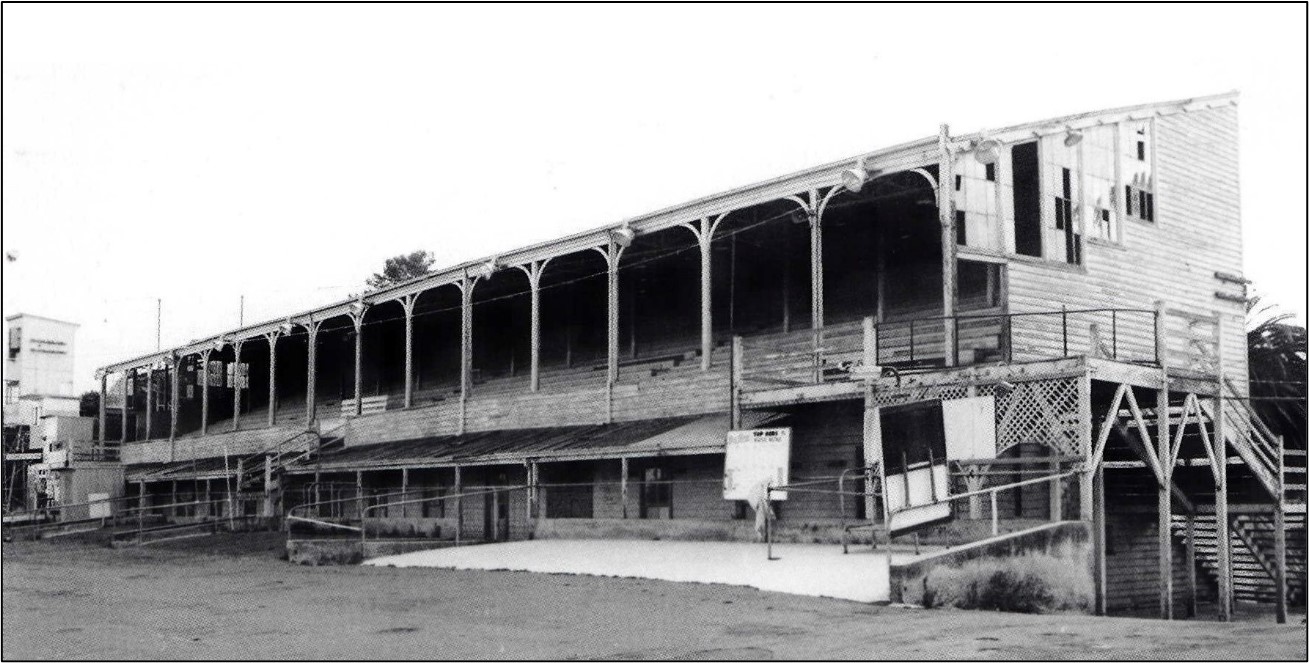
The first Geelong club President was Fulton Knowles. Later, Ted Turner, who trained Australian Cup winner Swanston Lass, became Club Chairman and guided the Club through a period of change in the late 1970s. Plans were drawn up for a new Australian National Animal Health Laboratory to be built opposite Eastern Park. As the laboratory was to deal with infectious diseases, it was decided that large congregations of animals would not be permitted near the laboratory and the Greyhound and Trotting Clubs were told they would have to vacate Corio Oval. It was decided both clubs would move to a site by the Princes Highway in Corio.
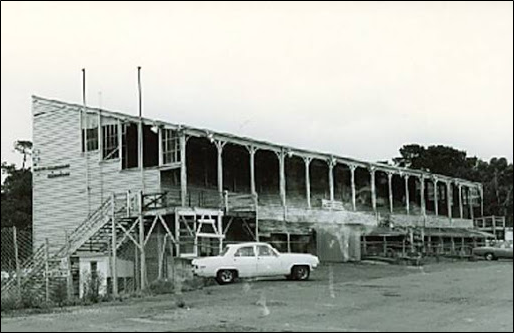
This occurred in 1956 with greyhound racing held inside the trotting circuit. The popularity of greyhound racing flourished at Corio Oval with about 25 bookmakers at each meeting servicing the needs of punters as Geelong grew in the post-war industrial boom.
Former GGRC President the late John Howard recalled it was a pretty rough old world in greyhound racing in those days and things have changed now.
Owning a greyhound was not easy either in those days as the Geelong Council actively discouraged the greyhounds. The council would issue permits for people to own greyhounds but permits for properties to train greyhounds were very hard to come by. Sometimes permits actually went with a block of land. Bernie Watts, the dog catcher, was responsible for coming around and counting the number of greyhounds on a property to make sure the council fees had been paid, but as John Howard worked on the council and was a friend of Bernie's, he never had his greyhounds counted. To lighten the load on owners, the Greyhound Racing Control Board (GRCB) picked up the payment of fees to councils in the 1970s.
In 1964, the Trotting Club, under the guidance of President Ray Beckley, bought 23 hectares of land at what is now known as Beckley Park. The Racing Development Board bought a further 13 hectares adjoining the site a few years later. The trotting-Club moved to Beckley Park in September 1978. The Greyhound Club, which had hesitated on the move, had its opening night at Beckley Park on Friday, March 7 1980, enjoying state of the art facilities at a cost of $650,000. The greyhound circuit backed onto the trotting track and this allowed for some independence.
One figure looms large over the Club during this period. The late W.A. "Horrie" Capron was a long-serving President of the Club during these flourishing years of the mid-1970s. Also, a bookmaker, Horrie is not remembered fondly by many who knew him during this time. Capron would also quiz a number of kids about their fathers' “greyhounds” form but the kids very quickly learned to play dumb.
Legendary trainer Graeme Bate was involved in racing during Horrie Capron's rule at Corio Oval and Capron exercised very tight control over the operations of the club. If you wanted to race at Geelong, you had to let Capron see your dog trial. Thus, Capron was the only person who knew the trial times and armed with this information, he then did the grading for the races. Not only did he grade the races, but he also did the box draws ably assisted by Jack Luke, who did the handicapping. As well as being a bookmaker, Capron was also a punter. When he decided to bet, he would have a number of people placing bets for him so all his money would all go out at once and secure the best odds. But then the odds would drop immediately meaning many punters, including the owners, would miss the boat.
Capron kept control of the club by limiting club membership to thirty despite the club's constitution requiring the club to have 100 members. The Board was elected by this very small club membership, which Capron controlled. It was widely believed that the membership contained a number of dead directors whose devotion to the club was such that they returned from the grave to ensure Capron's regular re-election. All 30 were mates of Capron's who voted him in year after year.
In November 1973, the Greyhound Weekly published a letter from the late Bill Pearson discussing the "unreal membership situation at the Geelong Greyhound racing club". Bill, who had been trying to join the GRCB for many years, wanted to know why, in the city of Geelong with approximately 120,000 people, the club had only 40 members. He also pointed out that two directors could form a quorum, as was the case when Horrie Capron, the club President, suspended O. W. Nicholson for two years for calling Capron "a bloody idiot”
In November 1973, Bill Pearson clashed with GRCB officials before the start of the race meeting. Police were called when Bill attempted to sell his form guides inside the grounds. The news photographer and the reporter, who accompanied Bill, were also threatened with eviction by GRCB Secretary Mr. Jack Luke. It was clear that the Geelong club had given preference to a new publication called Greyhound Guide, which was the same size and lay out as Pearson's Gold Guide and was published by racing commentator Wayne Kirby.
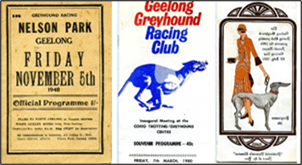
Matters came to a head in 1965 while the Club was still at Corio Oval Local GOTBA President Steve McKee began a campaign to meet with the club directors to discuss a series of issues Including stake money and kennelling. Capron refused to talk to them and finally the Victorian GOTBA called a boycott of the races at the club. This resulted in only three to four greyhounds competing in the races. Finally, the club agreed to meet with the GOTBA but nothing was changed as result of a series of demands. McKee realized that Capron's control of the membership would thwart any efforts for change and began a long campaign to get the membership opened up.
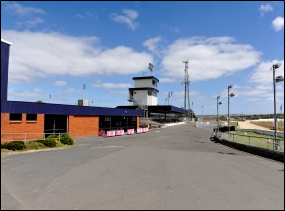
This local campaign needs to be seen in the wider context of the ongoing and successful campaign of the GOTBA against proprietary greyhound clubs and the location of the profits within the industry. With Horrie Capron as the President and with the club's 30 members supporting him, there seemed to be little the GOTBA could do. The limit on the number of club members had been a source of discontent for the GOTBA for a number of years after a long battle the GRCB eventually directed the club to have open membership.
Capron still refused to accept new members and all the Greyhound Board of Control was prepared to do was to advise an increase of ten members. However, this did not change the voting patterns for the Club Directorate who appeared to be of the same ilk as the old membership. Eventually the GRCB intervened and went to the extraordinary lengths of hiring the State Electoral Office to conduct a board election arising from a vote of no-confidence at an extra-ordinary meeting of club members where the GOTBA now had considerable influence. The vote swept away the old committee and replaced it with a new one. With Capron voted out, Steve McKee became President in time for the shift to Beckley Park. He was followed some years later by Ted Turner. The only survivor from the old regime was Club Secretary Kerry Askew.
Geelong local the late John Howard, or Jack as he was known, had been involved in the GGRC at Nelson Park and was approached by Capron appointee Kerry Askew to go on the Board. One of the tasks for this committee was to sign off on the lease for the weekend market, which was held in the car park next to the track and Askew negotiated the lease. From that time, there followed a concerted whispering campaign and rumours about the financial arrangements for the market, all of which proved to be unfounded by repeated audits. The issue of the lease for the market has continued to be a problem for the club and former Melbourne Greyhound Racing Association Manager Marg Long recalls a series of acrimonious lawsuits.
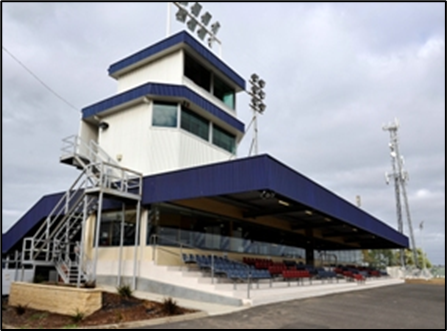
Horrie Capron also had trouble on another front. A great argument arose one night at the trials when Capron's mates were jumping the queue, leaving other greyhound owners waiting. One of the owners objected and got very little sympathy from Capron. By coincidence, the aggrieved owner's son was the race starter, pulling the handle that opened the starting boxes. In an angry confrontation with Capron, he said “I'll fix you. I know what you've been doing". He maintained he had seen marked race books that his son had brought home with each race marked E and L (for early and late) by one of Capron's associates. It was alleged that the boy, David Geall, was paid $20 a week to pull the boxes early or late according to the instructions he'd been given. Pulling the boxes early meant the outside greyhound had an advantage, pulling them late meant the inside greyhound had the advantage.
Greyhounds that were good starters know exactly when the box will open judged by noise of the approaching lure, so they were disadvantaged when there was a late pull, possibly banging their head on the front of the box. Given that a greyhound covers 20m per second at full stretch, even a half second delay at the start could be decisive. Many believed that the early and late starts could be critical at Corio where the 457m boxes were located on a turn where there was a short sprint to the first turn and obviously the first greyhound around the turn would have a greater chance of winning Geall later pleaded guilty to receiving the money.
Initially, Club Director Wayne Freedman, Horrie Capron's son-in-law, was warned off greyhound tracks for five years by the GRCB when found guilty of having counselled Geall to engage in corrupt practice. However, Freedman appealed to the Supreme Court and had the decision over-turned. Capron was subsequently charged with improper conduct over the matter. This episode is still referred to by a number of local Geelong stalwarts as the "Freedman scandal.”
When the new track opened, many outstanding greyhounds competed on opening night, but none greater than the top liner of the time Tempix, who had proven to be almost unbeatable on U-shaped circuits. Greyhound racing prospered at the new track under Secretary Kerry Askew with his emphasis on marketing and promotions. High profile entertainers often performed to attract bigger crowds. Greyhound racing stalwarts who served considerable periods as Club Chairman at Beckley Park were Steve McKee, Jack Howard, Mark Pearson, Wendy Pearl, Max Scott and Barry Cole.
This period also saw the rise of one of greyhound racings talented women. Marg Long was born in 1949 in Poowong. Her early involvement was as a Secretary for the GOTBA branch In Traralgon. In the early 1980s, the position of secretary at the Traralgon club came up and the club President, Stan Johnson, approached Marg to apply for the job.
When she started at Traralgon, the club was a non - TAB club and Marg took the club to full TAB coverage of the club's 12 race meetings. In those days, the club's secretary did everything which often included taking responsibility for the race grading. She remembers this led to what she described as “a few vigorous exchanges over the years.” When asked to reflect on her experiences as a woman in a male dominated industry, Marg Long is philosophical. Being a woman and coming from a small country club was not an advantage in dealing with some of the senior administrators of the GRCB in those days, one of whom she remembers as “a pig of a man." Her motto when she worked at Traralgon was “Just deal with the crap and get on with the job”.
While working at Traralgon, Marg filled in for Kerry Askew at the Geelong Club and developed a good working rapport with him. Marg moved to Geelong, soon succeeding Kerry Askew when he left. Marg admires the work that Kerry Askew did at Geelong particularly in relation to his work with club President Horrie Capron. Capron and his sidekick, Jack Luke, exercised complete control over the racing operations at Geelong and as one insider from those days observed "'If you weren't prepared to do things Horrie's way then you could forget racing a greyhound at Geelong
Kerry Askew and future President Steve McKee worked to broaden the membership base at Geelong and end Capron's reign. When Marg took over from Askew, she was left with a highly supportive committee that included Chairman Jack Howard, Fred Gillett and Ron Nestor. However, the break with the previous era was not complete and was fraught with tensions between the new committee and some members of the old guard. The situation was not helped by the "Freedman scandal." The time proved expensive for the club as a committee was frequently seeking legal advice to defend itself from accusations and political in-fighting particularly over the issue of the administration of the Saturday market.
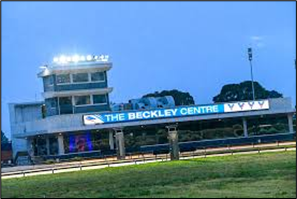
However, the 1990s saw the demise of a once great club. As with many other clubs with the advent of SKY Channel, on-course revenue streams dried up and by about 1990 things were beginning to fall apart. The club was in continual dispute with the Greyhound Racing Victoria (GRV) Board over inconsistent and irregular management practices and various stop-gap management schemes were tried.
Despite all this, there were many innovations at Beckley Park in 1990, one of which was the innovation of movable starting boxes to allow racing over a 600m distance. The boxes, designed by then GRCB electrical contractor the late Ron Izon, could be lifted off the track by a hydraulic operator. In addition, there was a $250,000 upgrade of grandstand facilities providing fully sheltered and carpeted viewing of races at the track.
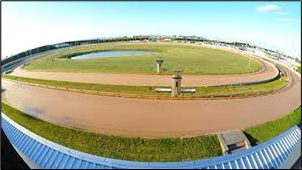 Following a "show cause” request from GRV in October 2003, the GGRC was put into Administration with GRV's then Club's and Services manager Colin Baird (a former Secretary of the club) taking the role of Administrator. Dennis Lockwood as Chairman (and also an MGRA Director) was instrumental in reorganising the club's management and financial status under Baird's guidance. Following the election of a completely new Directorate under Chairman the late Maurie Blair and a number of years of improved governance and financial management, the GGRC was released from Administration on December 31, 2007.
Following a "show cause” request from GRV in October 2003, the GGRC was put into Administration with GRV's then Club's and Services manager Colin Baird (a former Secretary of the club) taking the role of Administrator. Dennis Lockwood as Chairman (and also an MGRA Director) was instrumental in reorganising the club's management and financial status under Baird's guidance. Following the election of a completely new Directorate under Chairman the late Maurie Blair and a number of years of improved governance and financial management, the GGRC was released from Administration on December 31, 2007.
In March 2008 the Geelong Greyhound Racing Club as it is now known, established its brand-new kennel and administrative facility valued at $1.2 million. Furthermore, the biggest development in the club’s history is took place in 2010 with a complete re-development of grandstand, restaurant, bar and TAB facilities as well as a newly configured 2 track complex with both country and city racing configurations. This new $10 million dollar facility was renamed ‘THE BECKLEY CENTRE’ and has validated Geelong as an epicentre for greyhound racing and the GGRC at the forefront of greyhound racing in Australia.
Today, the Club stages two race meeting every week with Tuesday twilight and Friday night racing at the state-of-the-art venue. With over 104 race meetings every year including the Geelong Gold Cup, one of the leading events in Victoria’s greyhound racing calendar.
For the premium greyhound racing experience, the brand-new state of the art Beckley Centre is a winner. First class in every way, the dining area is set with panoramic views over the twin racetracks, and the winning post.
The Beckley Centre’s well-appointed restaurant seats 240 and is a great venue to celebrate weddings, birthdays and special occasions and for work functions and business conferences and seminars.
Geelong has been home track for many of Victoria's leading trainers, who have won some of Australia's biggest races. These include Graeme Bate, Allan, Robert and Jeff Britton, Tom, Andrea and George Dailly, Paul Bartolo and Dennis Trewin and his partner Tina Womann.
Since 2006, the Geelong Greyhound Racing Club has been involved in many community benefit activities: Good Friday Appeal, Relay For Life, The Great Chase, Greyhound Adoption Program (GAP) promotions, local service clubs including Lions and Rotary, Sporting Clubs and Social clubs.
Club Presidents
M.O'Brien 1956 - 1957, H.Buchanan 1957 – 1958, J.P.McMahon 1959, W.A.Capron 1959 – 1978, E.J Turner 1979, S.T.McKee 1980 – 1987, J.R.Howard 1987, 1992, B.D.Jones 1992 – 1993, M.J.Pearson 1993 - 1995, M.J.Scott 1995 - 1999, B.G.Cole 1999, Mrs W.Pearl 1999, W.Hamilton 2002, M.J.Scott, 2003-2006, D. Lockwood 2006, M.J.Blair 2006-2015, M.J.Pearson 2015-2020, H.Cooke 2020-2020, 2020-Current B.Parkinson.
